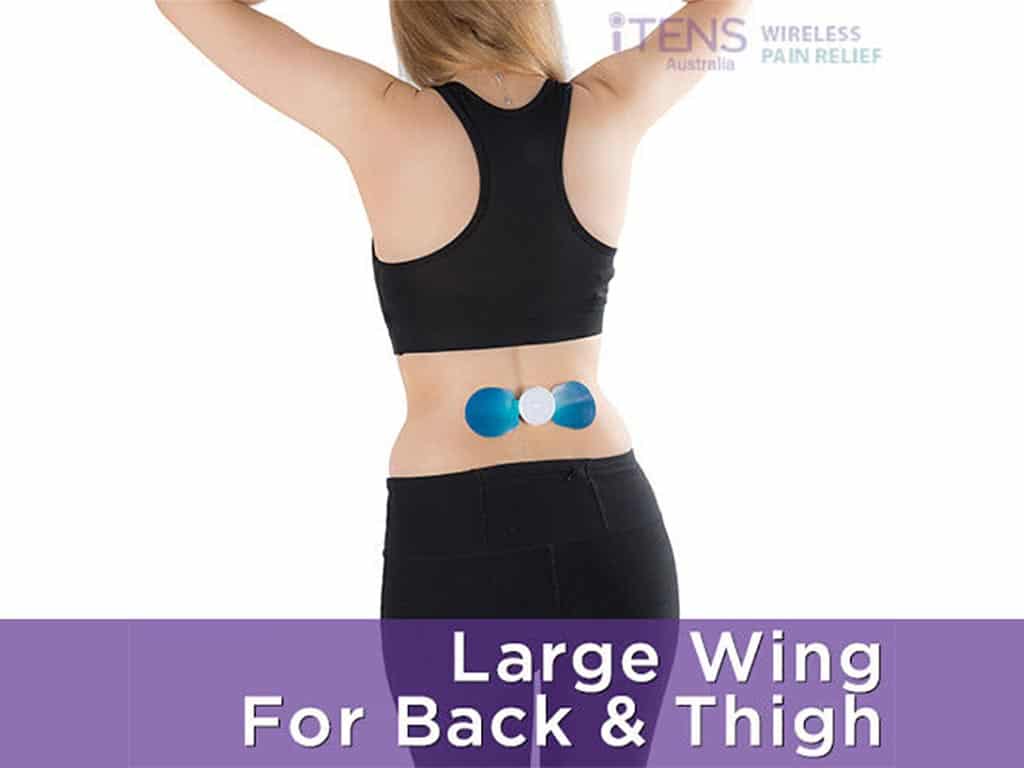
Many people experience sharp pain, numbness, and tingling sensations from a pinched nerve in the lower back. For some, it even extends down and causes leg pain. Fortunately, Transcutaneous Electrical Nerve Stimulation (TENS) is an effective pain relief method that people can use outside of medical settings. However, learning proper pad placement is key to using a TENS unit for pinched nerve in lower back. For lower back pain, they may apply TENS pads on either side of the spine.
Pinched nerves can develop due to poor posture, disc herniation, and sports injuries. There are several pain treatment options available to people with lower back pain. This includes physical therapy treatment, oral medications, and surgery. However, these methods of pain relief can be limited. Fortunately, TENS therapy offers additional relief for different kinds of pain. This article will present how TENS units work, their benefits, and how to operate them.
How a TENS Unit for Pinched Nerve in Lower Back Works
A pinched nerve in the lower back can cause significant pain for individuals. Hence, many seek treatments for it. One option is to use a TENS unit for pinched nerve in lower back. This medical device works by using electrical stimulation to trigger various mechanisms. It has adjustable settings that allow users to customise their sessions based on their needs.
Using high-frequency stimulation (50-120 Hz) triggers the spinal nerve cells to block the transmission of pain signals. This is ideal for severe or acute pain because it takes effect quickly. In addition, this setting can trigger vasodilation. By increasing blood flow to the target area, individuals may feel relief from muscle pain. The improved blood circulation can also help treat injuries causing the pinched nerve.
Meanwhile, people use low-frequency stimulation (2-10 Hz) to trigger the production of endorphins. These hormones are natural painkillers that bring several benefits to the users. It can help reduce inflammation, improving the range of motion. Furthermore, it can help reduce stress caused by the pain and improve moods.
Main Theories at Work
The effectiveness of TENS therapy treatments is based on these two main theories:
- Gate Control Theory of Pain: This suggests that electric pulses can stimulate the nerves to close a “gate” in the spinal cord. In turn, this reduces the amount of pain messages that reach the brain, causing a decrease in pain levels. This mechanism is also known as the pain-gating mechanism.
- Endorphin Release Theory: It poses that electric nerve stimulation can induce the release of endorphins. These are hormones that bind to opioid receptors, reducing the overall perception of pain and short-term relief.

Benefits of Using a TENS Unit for Pinched Nerve in Lower Back
There are several benefits to using a TENS unit for pinched nerve in lower back. Firstly, it is a non-invasive and safe treatment option for those looking for alternatives to surgeries or injections. Unlike invasive procedures, TENS has minimal risks and can produce a pleasant sensation. Moreover, there are no risks of infections and complications with proper use.
Secondly, it is a drug-free method that can help people reduce their intake of pain medications. In some cases, individuals forego oral medications altogether and use TENS to replace them. This is beneficial for avoiding the adverse effects of pain medications. It can also be more cost-effective in the long run.
Thirdly, TENS is complementary to other medical treatments. Hence, it can provide additional relief as part of a treatment plan. It can also help improve body functions and reduce the recovery period. Lastly, TENS is a battery-operated, portable device. Thus, individuals can use them in various locations for convenient short-term pain relief. Some also offer wearable pads that people can hide underneath clothing.
Are There Potential Side Effects?
Similar to most medical procedures, there are potential side effects when using TENS machines. One side effect is an allergic reaction to the material of the electrode pads. To avoid this, people may opt for hypoallergenic gel pads.
Another possible side effect is muscle spasms or tingling sensations. This typically occurs when the individual uses an excessively high-intensity setting. Hence, users should decrease the intensity or stop the session if this occurs. Lastly, some may develop skin irritation or mild burns underneath the electrode site from overusing the machine. Users should avoid using the machine for longer than one hour.

Pad Placement When Using a TENS Unit for Pinched Nerve in Lower Back
Proper electrode placement is essential when using a TENS unit for pinched nerve in lower back. Generally, users apply the electrode pads on muscles near the pain source. For a pinched nerve in the lower back, individuals can apply the TENS pads on either side of the spine to effectively deliver the electric currents to the area. They may also apply it on both sides if they wish to.
However, users must avoid attaching the pads directly to the spinal cord since it is a sensitive area. The same applies to the chest and throat. Moreover, users should also avoid placing the pads on bones or broken skin patches. When using multiple pads, they must place them at least an inch apart to avoid interference.
Moreover, users can benefit from preparing the skin before pad placement. Attaching the adhesives to dry and clean skin can extend the use of the pads. It can also reduce the risks of potential skin irritation by maintaining hygiene. Lastly, it enables more effective delivery of the electrical pulses.
How to Use the Device
To use a TENS machine, start by placing the pads on the target area. Next, link them to the control unit using electrode wires or Bluetooth, depending on the device. Once the pads are securely attached, they may turn on the unit and adjust the settings accordingly. It is ideal to slowly increase the intensity to avoid electrical shocks or discomfort.
Users may set a timer to signal when they should stop the session. Once the alarm sounds, the operator must turn the device off and remove the electrodes. If they wish to conduct another session, they may do so after at least 20 minutes.
Conclusion
A TENS unit for pinched nerve in lower back is an effective method of reducing the pain sensations felt by the person. It works by sending low-voltage electrical currents to the target area and triggering the pain-gating mechanism and endorphin release for relief. It can also increase blood circulation to relax tense muscles and aid in healing injuries. This is effective against several acute pain and chronic pain conditions that can cause pinched nerves.
Furthermore, TENS is beneficial to many people since it is a non-invasive and drug-free method of alleviating pain. This battery-operated device is portable and easy to use. As such, it helps many people reduce their intake of medicine. However, consulting a medical professional is recommended before using it. They may ensure safety and advise on pad placement. For lower back treatments, individuals can apply them to either or both sides of the spine.







